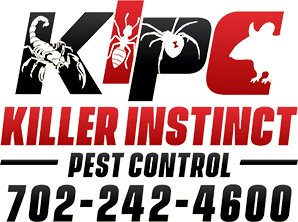How to Keep Your House Pest Free
If you’ve ever had to deal with significant pet problems, you will know how awkward it is. You will need to work with professionals in order to get your home cleared of whichever pest has made its way into your home. There are a lot of pest risks out there and if you do end up with an infestation then there is a significant risk to your health. They’re not just an inconvenience, pets are a real threat. If you can avoid ever getting them in the first place then you should make sure you do so! What are the best steps to keep your house pest-free?
Keep it clean
Cleaning isn’t a fun job, but it has many benefits. One of these benefits is keeping pests away. Cleaning ensures that leftover morsels of food are removed and can get rid of the waste that can attract pests. A lot of pests are constantly scavenging for food, so don’t give them the chance to find it within your home.
Make sure there are no damp areas
Some pests are attracted to damp. If you left a wet towel out in your home, the chances are that eventually, some form of pest is going to work its way there. Creatures like centipedes, millipedes, lice, and silverfish are all attracted to the damp and will look to make a home there once they have found an area with enough moisture. If you struggle with damp areas in your home, get them treated or do all you can to avoid moisture building up.
Seal your food
Most pests really couldn’t care less where they get the food, and many of them are able to get into your cupboards. You’d be amazed at the ability of rats, mice, and insects to find food that hasn’t been sealed up and hidden away from them. Keep everything in tightly sealed containers so you aren’t giving pests a hint that there is a free meal.
Fix any cracks or holes around the house
If you’ve noticed any little cracks or holes developing around the home, such as in the woodwork or somewhere within the basement, it is all too easy to ignore them. They don’t necessarily have too much of an impact on any other area of your life, and filling in cracks is just another job to add to your long to-do list. However, if you are trying to avoid pests then you should try and make your house as tightly sealed as possible. Pests come in all different shapes and sizes and have a way of creeping into even the tiniest cracks. Regularly check for holes and fill them in as soon as you get the chance.
Take good care of your pets
One of the most common ways that pests can enter the home is on your pets. If you have cats or dogs which roam around outside and then regularly come in the home then there are all sorts of creatures which can come in on their fur or their feet. As well as regularly treating for fleas, be aware if you are in an area where there are tics or other small pests which could potentially come in on your dog or cat’s coat. Practicing good hygiene for your pet is always helpful, especially for dogs who don’t tend to do much grooming for themselves. Regular baths in pet shampoo can help to repel and kill off any pests before they become a problem.
Contact pros
As well as being able to get rid of pests that have worked their way into your home, pest professionals such as KIPC can help you to ensure you don’t get pests in the first place. The best pest companies are as good at preventing infestations as they are at treating them.
Professionals use state-of-the-art methods to make sure that pests are repelled and that your home is not left vulnerable. You can take the very simple step of getting in touch to see what packages are offered, as many companies will offer a monthly service to keep returning to your home and ensuring pests don’t become a problem in your life.

